By Peter Rod
It is difficult to say definitively when the first dried grape wines were made. It is fair to assume that either the Egyptians or Greeks were the first to purposefully allow the fruit to dehydrate either by leaving them on the vine to dry naturally in the hot sun or by picking and laying the bunches out on straw mats or hanging from rafters.
The Greek Hesiod in the 8th Century BCE stated in his treatise on agriculture, Works and Days, that grapes should be dried in the sun for “10 days and nights” and then in the shade for a further five, before fermenting the wine in jars (Belfrage & Loftus, 1993). The Roman author Columella goes further in 50 CE when he encourages the protection from dew at night, the removal of bad or faulty grapes, and the separate use of free-run and press juice (Belfrage & Loftus, 1993).
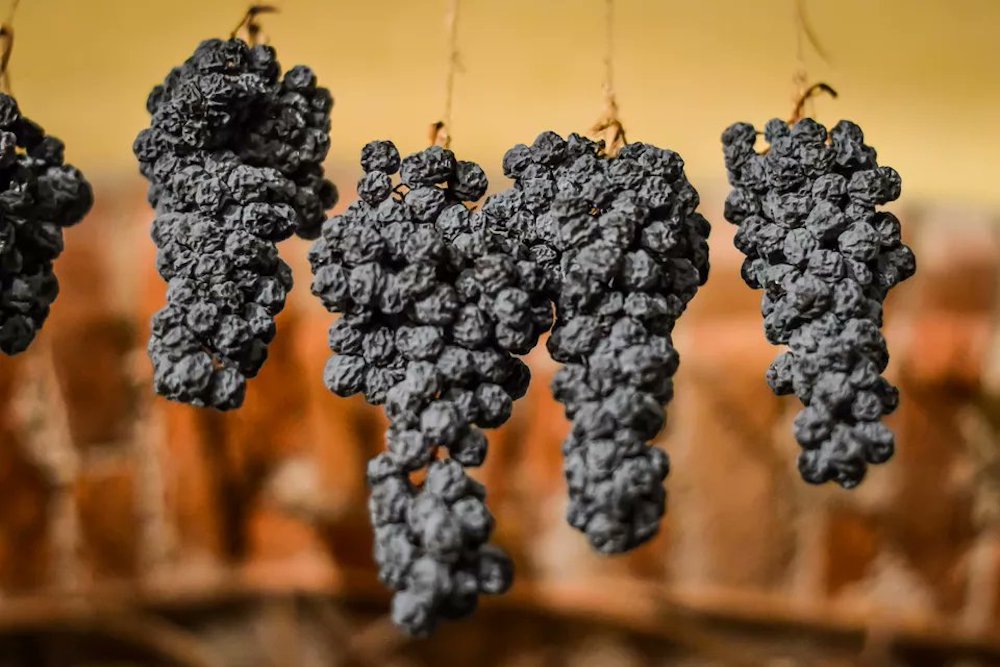
Wines of this sort were so popular because they offered higher levels of alcohol and sweetness, thus making them not only more durable and stable, but also potentially more complex and appealing to the consumer. The enhanced intoxicating effects were probably welcome too.
Today, dried grape wines are made in many diverse regions of the world. The most well-known are the Amarone and Recioto wines of Valpolicella in Veneto but there are also versions of passito, or dried-grape wines made throughout the rest of Italy and Mediterranean Europe along with select parts of the southern hemisphere. You might conclude that dried grape wines can only be made in warm, dry places. The fact is, there are also versions produced in cool, continental climates in places like Romania, Moldova, Switzerland, France, Austria, and Germany.

Niagara has been experimenting with dried grape wines for almost 20 years now, with Magnotta’s Enotrium considered the first of its kind in Canada. Today there are numerous producers making truly excellent wines in a range of styles from dried grapes using the Italian appassimento process.
In a nutshell, appassimento refers to the process of harvesting ripe grapes and drying them for a period of several days or months in special rooms where airflow, humidity, and temperature is controlled to varying degrees. It is important to note that this process does not ripen grapes like green bananas turning yellow and then brown in a bowl on your kitchen counter. Instead, the process concentrates what already exists in the grapes after they are removed from the vine. The grapes must be very healthy and fully ripe with adequate levels of acidity when harvested.
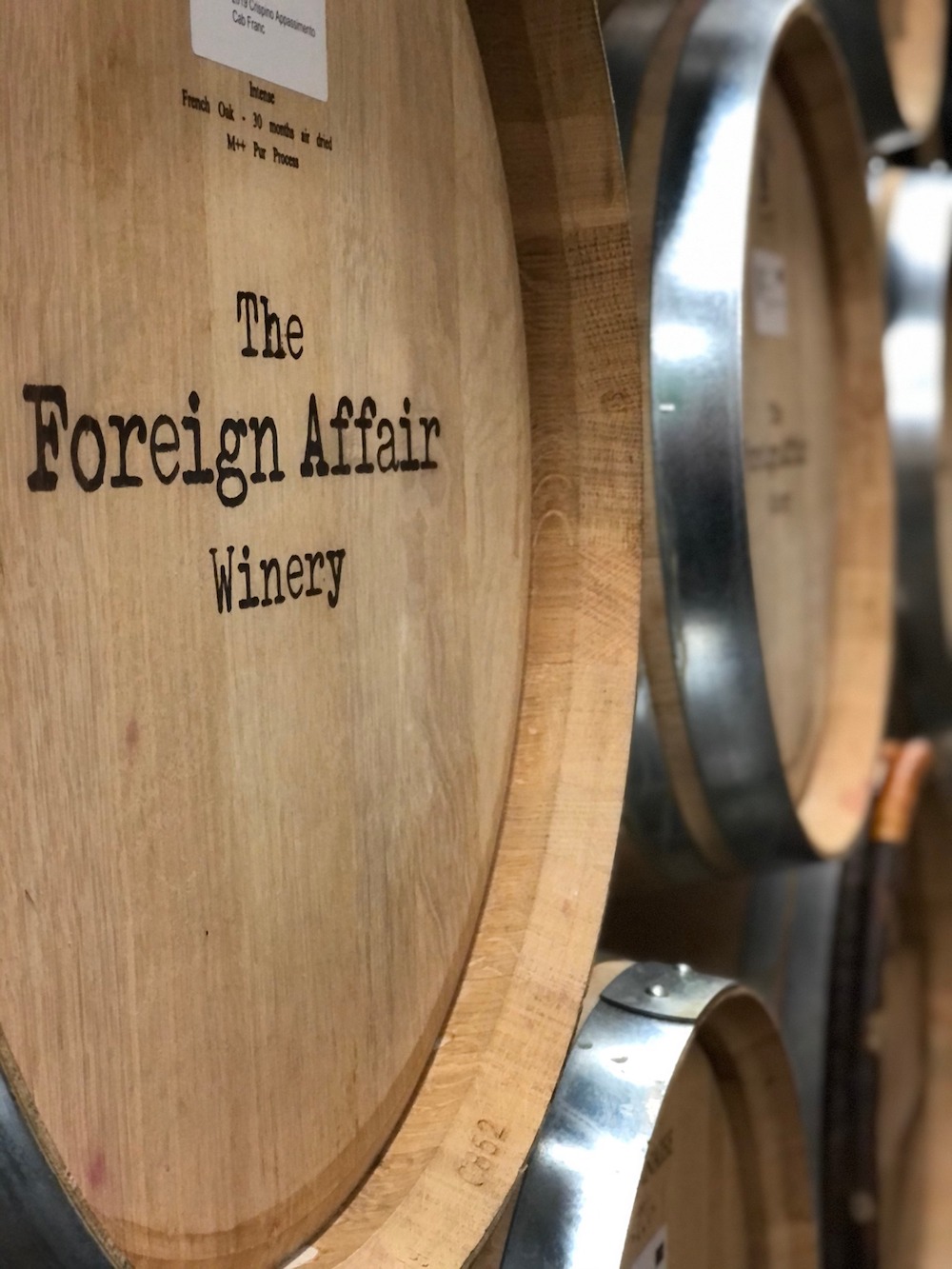
As the Venetians say, “a day on the vine is worth more than a week on the rack” so picking dates must be very carefully considered to ensure ideal fruit. While many Niagara producers told me it was important to harvest early enough to ensure healthy, clean fruit, they also stated that underripe grapes make poor wine, regardless of what special winemaking processes are utilized after picking. Ed Haddon of Foreign Affair called the harvest “cuckoo bananas” as there is an extra level of attention paid to picking only the best fruit for drying. Harvested bunches must be handled very gently in small baskets and every effort must be made to maintain fruit integrity and quality.
Harvest is followed by a second triage on sorting or shaker tables to separate the fully clean bunches from the unwanted bunches with broken skins, mold, or any other undesirable qualities. These grade A bunches are placed on racks ensuring the weight of bunches on one another does not lead to broken skins or any kind of fruit damage. There must be sufficient space between bunches and racks to ensure adequate airflow for even dehydration to take place.
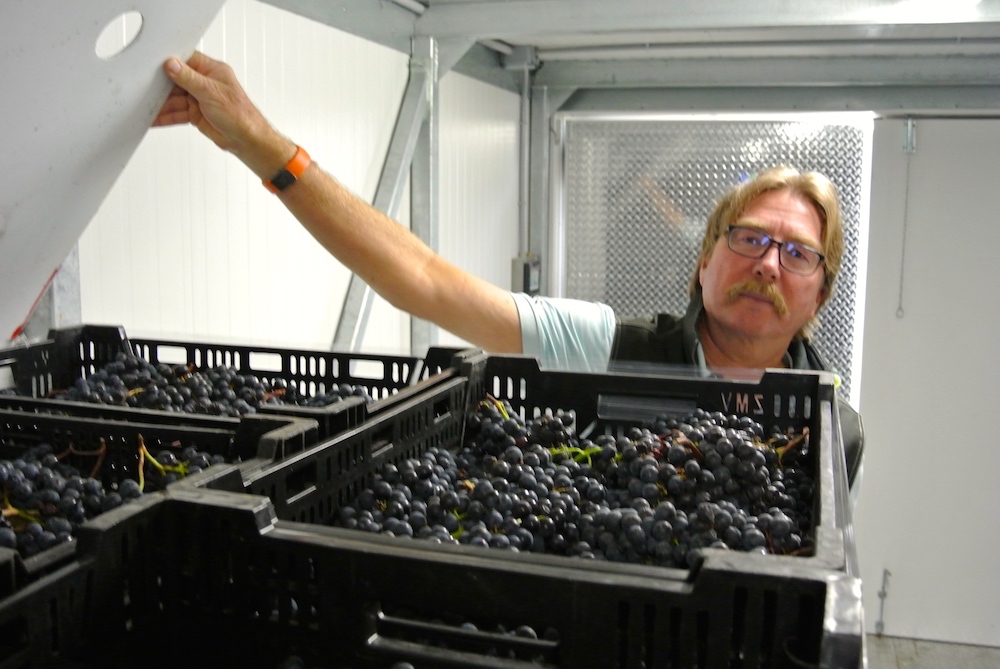
There are many different approaches to drying in Ontario with some using ventilated barns or open-air greenhouses, while others still use kilns. Andrej Lipinski, below, at Big Head goes to great trouble to stack crates 10 or more high in a special sealed room, wrapping them with plastic film and directing powerful fans up and through the stacked crates to maximize airflow, minimize humidity and speed up drying. Kew Vineyards, Angel’s Gate, and Rennie Vineyards use specially designed high tech temperature and humidity controlled drying chambers developed in conjunction with the Vineland Research and Innovation Centre.
There are many factors that help determine how long the drying process should last but typically it will be anywhere from two weeks to over 140 days. Aside from concentrating sugars, acidity, and tannins the drying process will result in important microbiological changes in the grapes that can impart additional unique aromas and flavours adding greater complexity and intrigue to the final product. After the desired period of drying has elapsed, the winemaker will perform a final sorting to eliminate any unwanted fruit from entering the fermentation stage.

This extensive triage combined with the loss of juice from evaporation means anywhere from 30 to 50% of the original harvested juice yield will be lost. Adding further to the scarcity and quality, many of Ontario’s top appassimento-style wines are only made in select, high quality vintages. In addition to the normal considerations one would make when purchasing a fine wine such as price, varietal mix, or oak use, when choosing an Ontario appassimento-style wine, it is important to inquire what percentage of the wine has been dried and to take note of the alcohol percentage and residual sugar present. Knowing this will help you to predict the final style of the wine and can help you match your taste preferences to the right product.
A second, less costly by-product of the appassimento process is ripasso wines. Unlike the aforementioned wines where dried grapes make up part, or all, of the final blend, ripasso wines use fresh, undried grapes to make a delightful base wine which is then re-passed over the used skins leftover from the more rare and expensive appassimento process. This second contact with the skins may kickstart a short refermentation adding a slight boost in alcohol to the base wine while adding extra complexity and mouthfeel.
The VQA of Ontario rules committee is currently reviewing the use of terms like appassimento and partial appassimento on labels of VQA wines. Since these styles of wine have recently become so popular in Ontario, the VQAO is attempting to update the rules to ensure producers meet all the necessary legal limits for sugar, alcohol content, percentage of dried grapes, and others in the hopes the consumer will have clarity when buying wines while producers have the necessary flexibility needed to produce high quality wines, consistently.
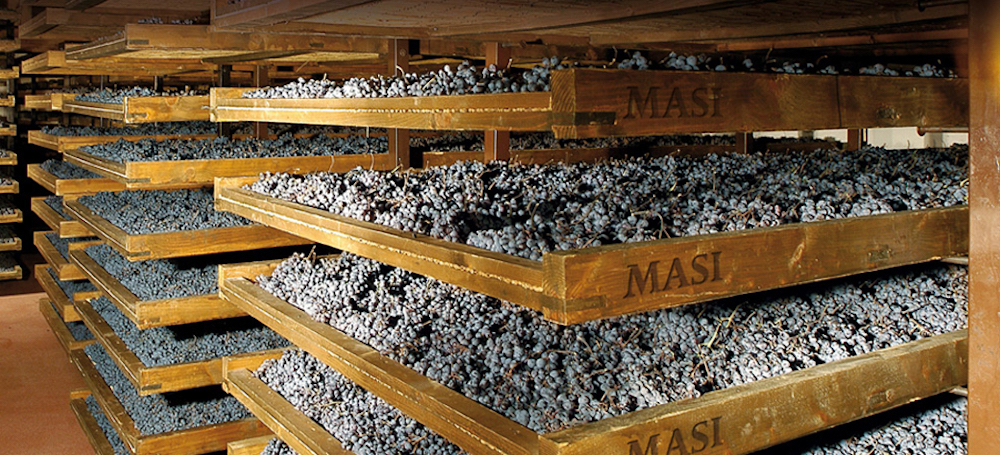
While I have traditionally been of the mind that new regions like Niagara should focus on the tried and true varieties and styles of wines we are gaining a loyal following and widespread reputation for, I am now convinced that after 20 years of experimenting with and perfecting dried grape wines, this category offers a very attractive and important style for our growing and evolving consumer base.
Some suggest that we should be focusing exclusively on capturing our unique climate and regional varietal character in normal table wines and skip using these exotic, foreign winemaking enhancements. Perhaps we should also do away with chaptalization, carbonic maceration, or malolactic fermentation while we’re at it? Each of these natural techniques, when used correctly, strives to make higher quality wines just as appassimento does. What makes sense to me is to continue to refine and expand our approaches to viticulture and winemaking in order to provide the growing Ontario VQA audience with an even greater selection of fine wines offering excellent value from our great terroir.
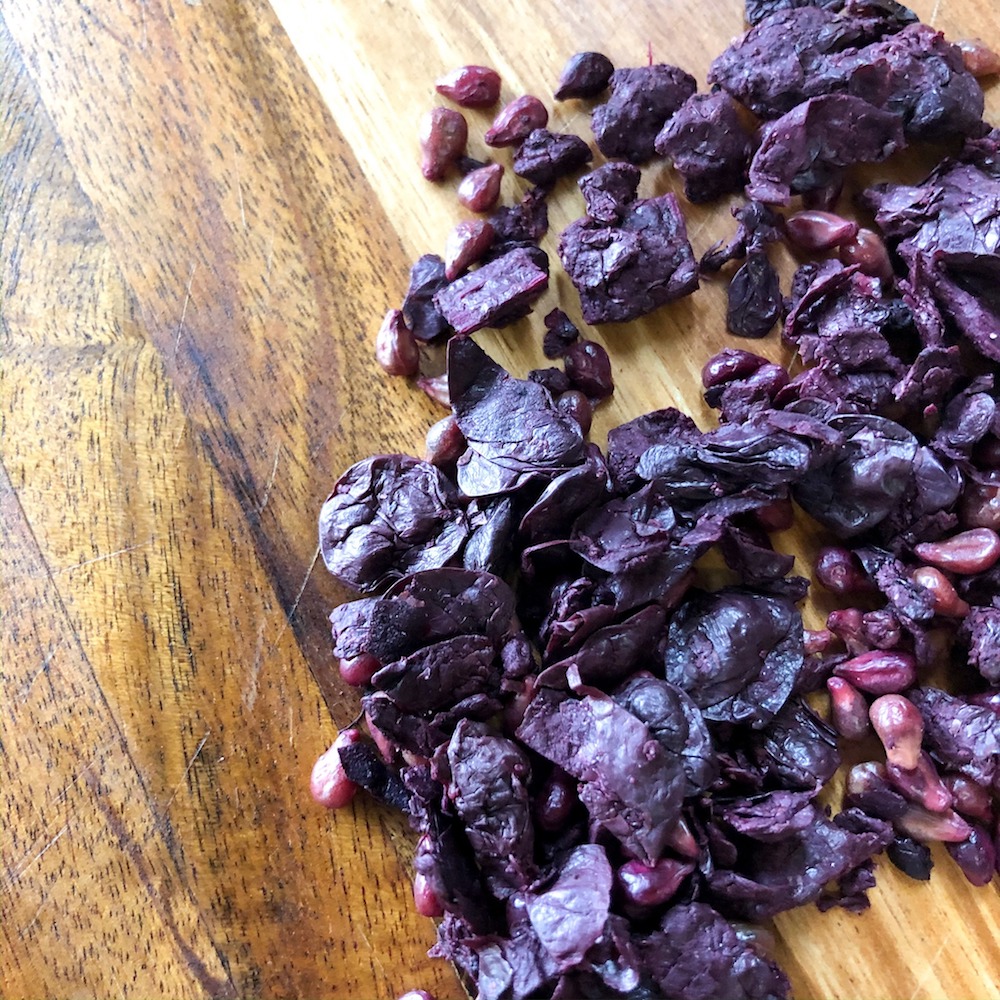
For this article, I had the pleasure of sampling 20 different wines from a number of renowned Niagara producers. This is only a fraction of dried grape wines produced here with wineries like Rennie, Reif, Cave Spring, Ridgepoint, Pillitteri (which makes the only Canadian appassimento style red using the traditional Amarone grapes of Corvina, Rondinella, and Molinara), and others adding to the vast array of options. While I focused this report exclusively on red wines, a second article could easily be written on the magnificent range of wonderful white appassimento wines being produced in Ontario today.
To say I was impressed is an understatement. Going into the tasting, I was concerned I might encounter excessive levels of alcohol in tiresomely sweet wines at wallet-shrinking prices. Instead, pretty much across the board, the wines delivered remarkable balance, complexity and many offered delightful value. The majority of the wines I tried were based on the classic Bordeaux red varieties with some of the best dominated by Cabernet Franc, a grape that we have certainly mastered in Niagara. There is definitely a regional style and it seems to be working. I have grouped the wines below by style and although I did not score the wines, I do provide a thorough impression of each in the hopes this will be enough to guide your purchase decisions.
For the record, all wines were sampled in a Riedel XL Pinot Noir glass over two nights at 20 C.
LEGEND: CF = Cabernet Franc, CS = Cabernet Sauvignon, Me = Merlot, Ma = Malbec, Sy = Syrah, PV = Petit Verdot
Ripasso

Foreign Affair The Conspiracy 2017 (45% CF, 35% CS, 15% Me, 5% PV) 13.2 abv $19.95
Great nose – changing by the second. First thoughts are of grilled fennel bulb and eggplant, dried cherry and Thompson raisin. Also, some sweet spice, dried rose, and a slight roasted meaty note. Even a very light menthol note that flitters in and out. Altogether, a very attractive nose with impressive complexity and intensity. A great harmony of savoury and sweet. Bright acidity, medium alcohol perfectly in balance, with nicely resolved, ripe tannins. Still enough to provide texture without the angry side. Very dry and nothing raisiny or fat here. May not have the complexity to age but will be fine for a few years and should be served with food. Thinking of lamb, dry aged beef, duck (breast or confit) and grilled veggies, mushrooms, and a range of cheeses.
Colaneri Corposo 2018 (70% CF, 30% CS passed over CS, CF, Me, and S skins) 14.5 abv $21.95
Pleasant spiced red apple and stewed sour red fruits with hints of sweet tobacco, rosehip, and dried citrus peel. Medium bodied, dry and smooth with warm finish and light bitterness adding a pleasant structural edge. Citrus peel, cranberry, and sultana in the shortish finish. Interestingly, this wine became almost California Pinot-like on day two with a distinctive sweet cherry fleshiness and spice note emerging. Felt less edgy, softer and more fruit-forward. Great with roast herbed chicken.
Partial appassimento

Kew Vineyards Soldier’s Grant 2018 (60% CS, 27% CF, 13% Me with 14% appassimento) 14.5 abv $19.95
Slightly warm nose with light intensity at first. Some cool climate varietal notes of leaf, earth, mushroom and cedar notes on macerated cherry and Mirabelle plum. On the palate an initial impression of dried fruit and then fresh red berry and red currant arrive with tangy acidity and dry, gentle tannins. Just medium length, very pure and drinkable today. Slightly more mellow on day two.

Foreign Affair Dream 2017 (41% Me, 31% CS, 25% CF, 3% PV with 17% appassimento) 13.9 abv $29.95
Sweet oak and custard notes from American oak. Peppery top note with smoky wood char and raspberry. Juicy, fleshy red berry flavours and quite lush feeling with a refreshing acid element. Fine fruit tannins in medium length. Day two brought some mushroom and barnyard notes with slightly less aromatic intensity. Palate is lovely however, as it is even smoother, rich with savoury notes and ripe, spiced fruit. Alcohol seems to have dissipated somewhat.
Angel’s Gate Mountainview Cabernet Franc 2015 (100% CF with 20% appassimento) 14.9 abv $29.95
Expressive nose of kirsch, mint sauce, cherry stone, spiced plum, briny Kalamata olive, and roast beef. Mouth-filling and super smooth with some oaky clove and mulled spice notes. Pleasant upper palate tingle. Seemed a little oxidative on day two but given time and aeration it re-emerged quite clean with a generous and smooth mouthfeel.
Foreign Affair Petit Verdot 2016 (86% PV, 14% CF with 22% appassimento) 14 abv $34.95
This is a real beauty. Sappy cedar and resinous herb notes with marmite or beef bouillon. Offers a mouthful of dense, dark fruit, fine tannins and savoury roasted meat flavours. Beautifully balanced acidity and alcohol with medium plus length. Even better on day two as it has opened up to offer blueberry and blackberry compote, thyme, leather and cherry liqueur notes. Very smooth and rich. Quite mouth-filling with Damson plum paste, anise and lip-smacking acidity with velvety mouth coating tannins. Medium plus length with seductive alcohol warmth that lingers in the throat and chest. Serious value and quality here.
Angel’s Gate Bin 95 2016 (65% CF all appassimento plus 35% Sy) 14.9 abv $44.95
Seemed quite boozy in the nose from the just-opened bottle but after some aeration in the glass earth, roasted plum, potpourri, lavender, bay leaf, and roasted red pepper arrived in support. Nicely jammy nose with some inky notes and a hint of oak spice. Very ripe sweet red fruits with lovely viscosity in the mouth. Fine, layered, velvety tannins with cocoa, dried cherry, rosehip and kalamata olive in the impressive finish. On day two, the wine revealed additional complexity with eucalyptus and red berry clafoutis plus just a bit of grassy barnyard funk taking center stage. Judging by how much this wine evolved and changed with air and considering the complexity and intensity here, this wine will just get better with 4 to 6 years or more of bottle age.
100% appassimento

Colaneri Insieme 2017 (38% CF, 28% CS, 24% Me, 10% Sy) 14.9 abv $49.95
Lovely aromatic intensity with currant, chocolate covered cherry and prune, peppery spice, and spirity candied orange nose. Some green tobacco leaf and mushroom adds depth. Full bodied but not viscous. Rounded fine tannins and medium acidity feels just right. Quite warm but not unpleasant due to the overall concentration of this wine. Some dry Oloroso-like and bruised apple flavours in a medium slightly bitter finish. On day two, sweet cherry liqueur and intense semi-sweet chocolate aromas emerged to the forefront. Also softer, fleshier, and more open. Delicious with 8-hour tomato sauce with Italian sausage and braciole.

Big Head Cabernet Sauvignon Select 2018 (100% CS) 15 abv $47.80
Boozy nose with rosehip, cured meats, dried cherry and light baking spice. Bay leaf and warm earth with a subtle stony ashy note typical of cool climate Cabs. Lovely attack of acid and tannin with bright sour red fruits, roasted plum and menthol. Medium body, dry with fine astringency. Some herbal bitterness with smoke and raw black licorice in the medium finish. This wine was a little edgy and tight on both nights and would likely benefit from some bottle age.

Big Head Merlot Select 2017 (100% Me) 14.6 abv $49.80
Bright and youthful looking with shimmering ruby hue. Very attractive nose with spiced plum compote, sweet pipe tobacco, red licorice, and spicy alcohol that warms the upper nostrils. Notes of cardamom and pepper too. Medium body with fine fruit tannins and medium acidity. Dry, smooth mouthfeel with cedar, dark cocoa, dark fruitcake, and cherry stone with an almost savoury meaty element in the medium plus finish. Delicious! On day two the wine was rich and round with similar acid and tannin supports. Lovely complexity and depth with new aromas of briny green olive, roasted dark plum, new leather and anise.

Big Head Raw Cabernet Sauvignon 2018 (100% CS) 15.7 abv $64.80
Interesting first impression of beef bone marrow, cherry custard, milk chocolate, and pink peppercorn with a warming spirity spice note. Quite grapey with resinous herbal undertones adding a touch of bitterness. Very slightly sweet with medium plus body and medium acidity. Very approachable. On day two, the wine continued to show the strong fruity, grapey nose with some ginger and black olive notes emerging. Almost Cru Beaujolais like with the light tannin and balanced acidity carrying the slight sweetness along very nicely. Was very good with a sirloin burger with traditional sweet and spicy condiments.

Big Head Raw Malbec 2018 (100% Ma) 14 abv $64.80
Wow. What an interesting nose. Candied watermelon and papaya when first opened and then immediately shifts to complex and varied aromas of sugared violets, sweet herb, Aleppo pine, cedar, seaweed, and strawberry ice cream. Dry but lacking any rough edges. Even better on day two with a more classic Malbec in my glass. Intense and complex aromas of licorice, violet, peony, dark berry, bay leaf, truffle, and cigar smoke. Something very reminiscent of butternut squash with clove and cardamom. Still very juicy with tannins and acid beautifully integrated. Certainly the most interesting and finest Niagara Malbec I have had.

Kew Vineyards Heritage 2014 (100% CF) 16 abv $34.95
Extremely intense, concentrated red and blackcurrant liqueur, strawberry/rhubarb pie, macerated Thompson raisin, with a top layer of charred cedar plank and eye-opening spicy alcohol. First impression is of a fine old-vines Grenache-based Chateauneuf-du-Pape or high quality red from Paso Robles. Full bodied and just off-dry but manages to have lovely balance of all elements. Velour-like tannins with a light, pleasing astringency that helps cleanse the palate. Maturity showing via dried fruit, mellow acidity, and cedar notes in an impressive finish. Showing equally beautiful on day two with just a hint more tertiary character coming out. Certainly one of the better values I tasted.
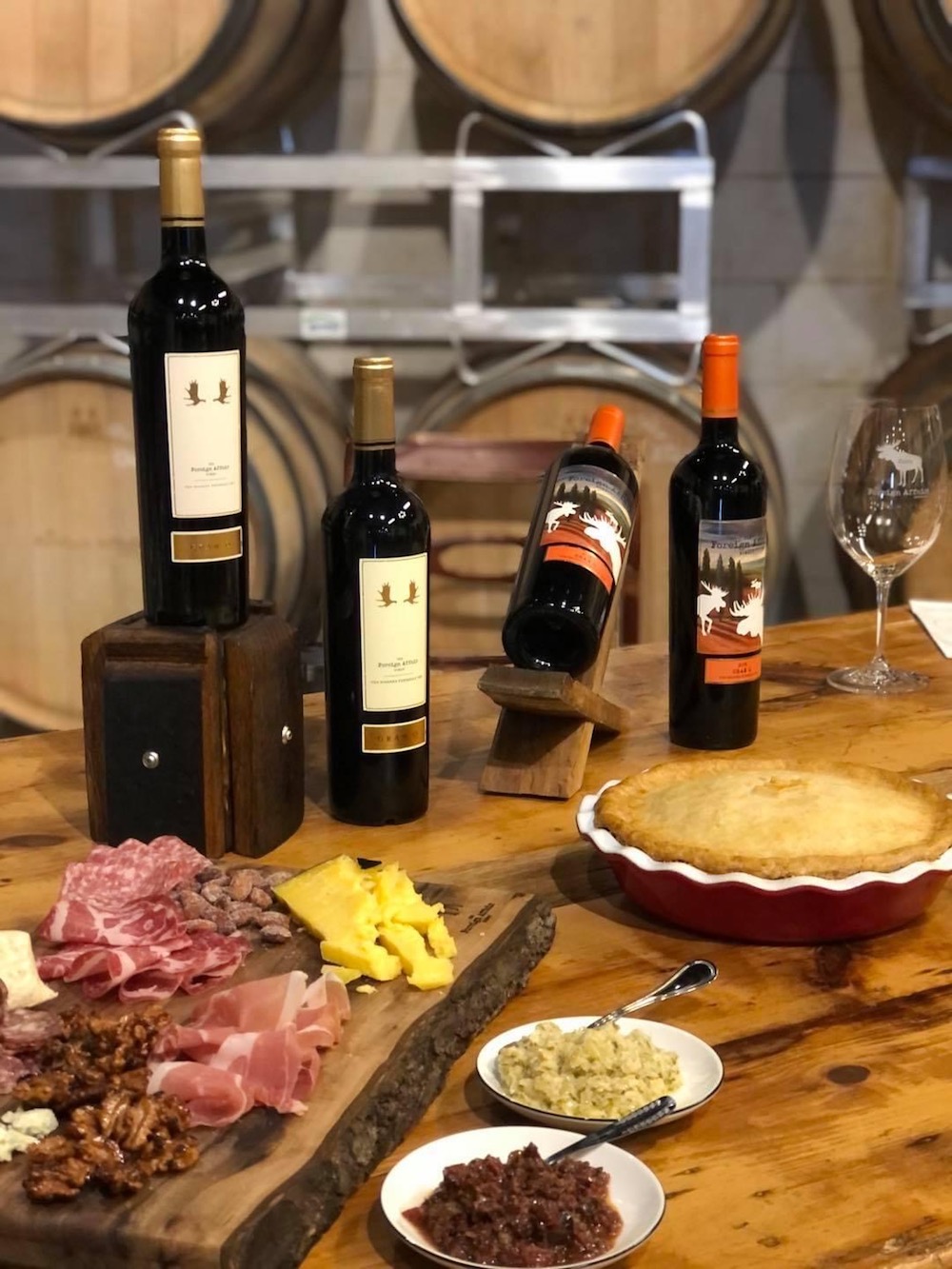
Foreign Affair L’Eredita 2017 (100% CF) 17.2 abv $110
From the Moyer Road estate vineyard, this wine spent a full 100 days drying. Penetrating nose of cherry liqueur, prune, pepper, cured spiced meat, candied blood orange, molasses, sweet marjoram, and bruléed sabayon. Feel the alcohol in the upper nostrils. Rich adequate acidity to balance out the medium sweetness. Fruit paste and dried fruit flavours with subtle pepper character and a medium long finish. Alcohol well integrated. On day two, the oak seems more apparent with strong clove and vanilla spice plus candied fruit. If they made a deluxe hybrid of red and black Twizzlers, they would smell something like this. This really is remarkable and although not quite boozy or sweet, offers a gorgeous alternative to Vintage Port, Niagara-style. This would be excellent with duck breast or pork prepared with salty and sweet fruit sauces.
Gran Q vertical
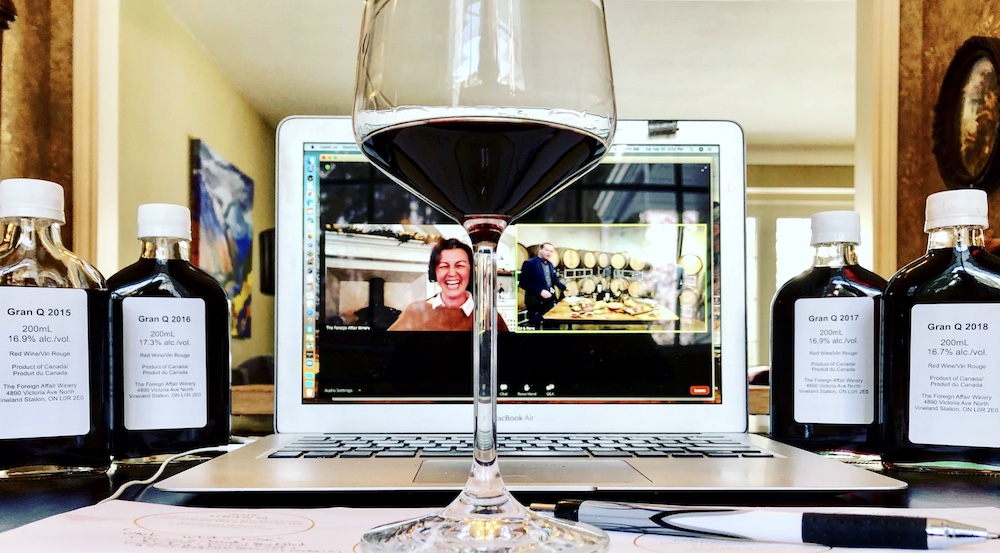
As part of this article, I was invited to an exclusive online tasting event featuring four vintages of the flagship Foreign Affair full appassimento wine called Gran Q. A tribute to the great Valpolicella producer, Guissepe Quintarelli, Gran Q represents the epitome of appassimento wines in the Foreign Affair portfolio. All four of the following wines were aged in French and American oak for 18 months. When available, these wines retail at the winery for $120 per bottle.
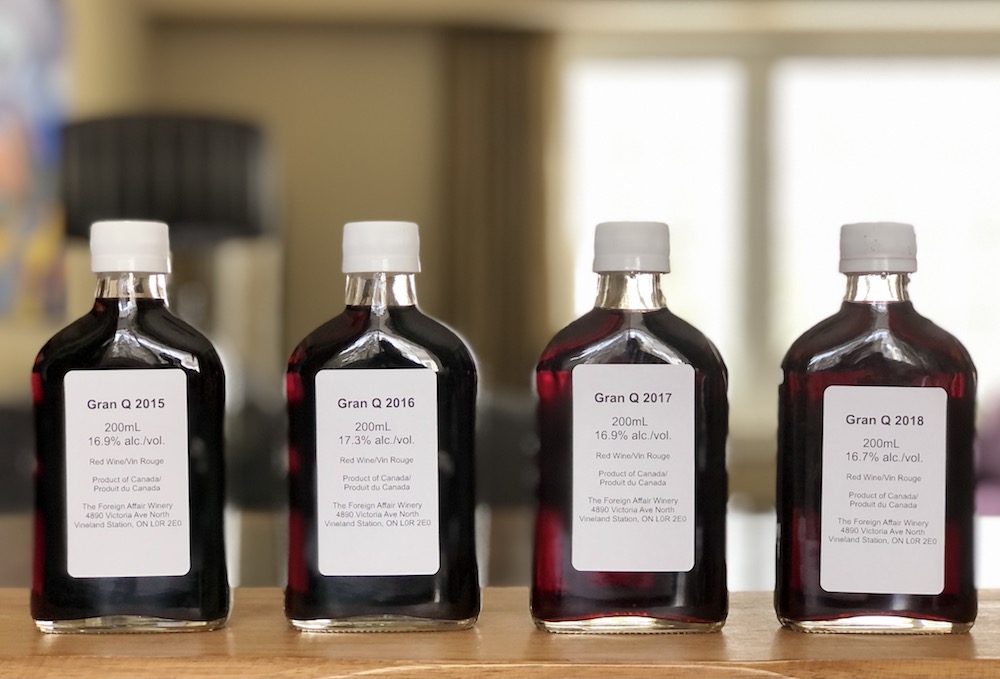
Gran Q 2015 (35% CS, 29% Me, 18% CF, 18% PV)
Curried spice, pepper, warm but not intrusive. Tobacco, macerated prune, green peppercorn, and slightly gamey. Very dry dominated by savoury tertiary flavours. Tannins mellowed with age and very juicy with bright acidity and medium length. Drinking well now.
Gran Q 2016 (40% CS, 20% CF, 20% Me, 20% PV)
Youthful fruit aromatics with baking spice, macerated fruit, vanilla custard, cherry and a slight medicinal note. Riper, softer acidity with medium plus body and tangible residual sweetness.
Gran Q 2017 (40% CS, 20% CF, 20% Me, 20% PV)
Gorgeous bright nose with slight volatility giving it added intensity and appeal. Chocolate, cherry, candied vanilla, rosemary, candy cane, and coconutty oak sweetness. Some raisiny notes too. Soft tannins with loads of ripe red fruit, medium tannin, and medium sweetness. Overall a gentler, easy-drinking style.
Gran Q 2018 (64% CF, 22% Me, 14% PV)
The most powerful of the four. Ripe dark fruits, strong alcohol presence but with grippy tannins and full body, it all fits. Silky and concentrated but holding back a little right now. Wood tannins more evident. Medium plus length and great overall intensity and depth. Certainly one to watch over the next decade plus.
About Peter A. Rod

Program coordinator and full-time professor of Wine Programs at Niagara College, Peter Rod is a 30+ year veteran of restaurant and wine program management, sommelier, wine education, and winery sales and marketing in both Ontario and British Columbia.
Peter has been named top Sommelier in both provinces and finished 3 rd in Canada at the 1997 Sopexa Grand Prix du Sommelier. He is also a past professional champion and VQA wines champion of the Renaissance Wine Tasting Challenge.
Peter holds his M.Ed. from Queen’s University (2020), WSET Diploma (1998), and is a certified sommelier (1992). This year he will complete his CWE and CSS certification through the Society of Wine Educators. In addition to his work at Niagara College, Peter has been delivering WSET Level 2 and 3 courses at Brock University for over 10 years. In recognition of his many contributions to the Ontario Hostelry Institute he was made a Fellow of the OHI in 2011.


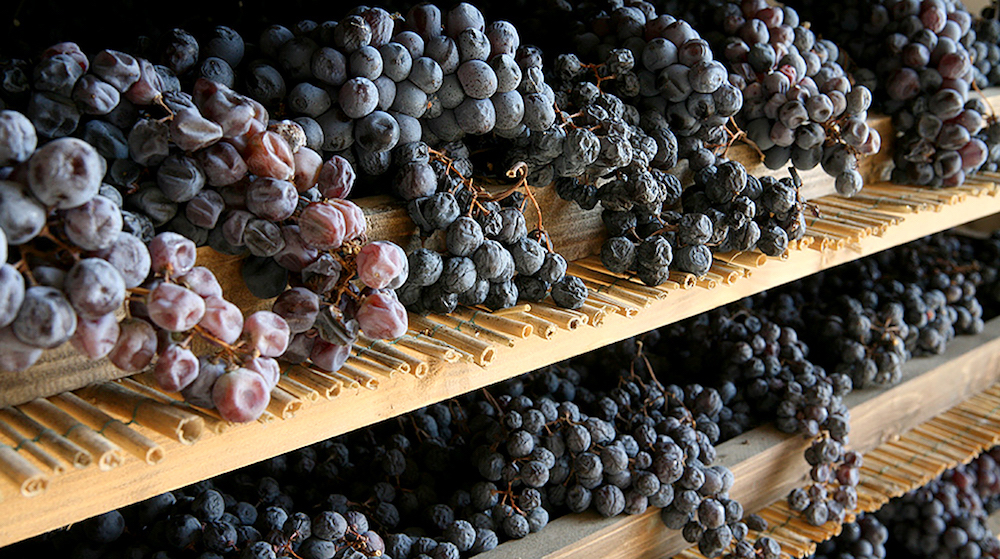



Hi Peter,
An interesting read. I appreciate your level of thoroughness, making note of the type of stem and temperature you served your wines at. I also appreciated your explanation of how the drying process of grapes works, informative but not overly complicated.
In respect to Appassimento style wines in Niagara, I agree with you that it is in the industries right to practice a winemaking style that is approved by the VQA and theoretically should work in this region. However I have a really hard time finding a balance in respect of quality-to-price for Niagara Appassimento wines.
I’ve found that a very few select Niagara Appassimento-style wines are chemically and structurally sound to hold up to sometimes even as long as medium term cellaring. Why? I’m not entirely sure. But on a handful of occasions I’ve opened wines, some current release, some as young as 4-5 years, from various Niagara producers to discover the wines are devoid of primary character, and ladened with unpleasant volatility and are effectively dead on arrival; which disappoints me considering the price point that some of these bottles demand.
I would love to see wines of these styles succeed. I believe that when done properly, appassimento style wines in Niagara are unique and individualistic and can be another example of this regions potential. However if I am going to pay upwards of 40 dollars and beyond for full appassimento wines from Niagara, I am expecting that my wine will be alive and changing in the bottle for the better whether it’s two, five or 10 years old.
Rome wasn’t built in a day, and the wine industry moves as slow as molasses so it’s understandable that we’re still working through some kinks. But eventually I think through practice and the correct legislation to help ensure quality wine is going to be made, Niagara producers collectively have to meet a standard if we are seriously going to commit ourselves to saying we’re an area that thrives in making dried grape wine.
Again Peter, good article, had fun reading
RJ thank you for your thoughtful comments.
You bring up an important point about the age worthiness of appassimento wines. It is reasonable to expect ultra premium wines should deliver the promise of high quality experiences in youth and deliver added complexity from tertiary aromas and flavours after many years in bottle. Alas, my experience with older Niagara appassimento wines is limited to those sampled for this article so was unable to really test this theory. There are quite a number of really excellent wines produced in Niagara that weren’t sampled for this article and I would certainly expect wines >$60 to demonstrate the ability to improve for 10 years or more. As you say, this style of wine is barely 15 years old in Niagara and I believe has already improved in leaps and bounds. For example, the 2018 Gran Q was arguably the most powerful and ageworthy of the four wines tasted and both 2019 and 2020 promise excellent wines that will mature with grace for many years. With growing consumer support and the continued efforts from our extraordinary growers and makers, I believe the quality will continue to improve in each price/quality tier. Add to that the growing international trend towards more approachable wines in youth with perhaps 5-10 years of aging potential (aside from the ‘classics’) and it will be interesting to see where we are 10 or 20 years from now. In the short term, I plan to enjoy the excellent affordable partial appassimento and ripasso wines as part of the wide spectrum of local wines I consume on a regular basis.
With climate change and significant weather fluctuations during the growing season becoming more and more of a reality for grape growers / winemakers, any opportunity to mitigate the risk of fruit quality should be explored. Using various techniques, such as the appassimento grape drying process, can only enhance the toolbox for a more consistent wine year-over-year. The application of these types of techniques not only provides consistency but simply produces more robust and consumer friendly wines.
Additionally, knowing that winemakers can rely on tools such as appassimento, they can reclaim leverage and not be held hostage by poor growing seasons which have off-sprung lesser quality vintages. As the external environment is rapidly changing, wine regions such as Niagara need to adapt and harness all the arrows in the quiver in order to stay relevant. Although the words “controlled” or “manipulated” can have the connotation of something un-authentic, the reality of the situation is that any manufacturing or production process which can create a better outcome and product should be taken seriously and embraced. As long as there are no harmful additives or preservatives involved, why should the use of nature’s elements be viewed as cheating in order to salvage a poor growing season or extreme temperature variability within susceptible regions, such as Ontario?
With this environmental shift, so too is the building of excitement around the use of appassimento techniques. Many already agree, simply based on the increasing number of product releases and interested wineries, that this style improves the quality of their wine by contributing flavor and intensity. It is this progressive adoption which will hopefully lead to the appassimento style becoming a signature wine offering for the province…… I can already see the branding marketing campaign, “Wine’s Better in Appassimen-TARIO”.
Interesting article and comments. I have to say I am not a supporter of appassimento wines. Reading the notes provided several reasons why I tend not to like these wines: there are many mentions of sweetness and booziness/warmth in the notes, and I think the general trend in premium wines is to avoid these traits. Extremely high alcohol levels are another reason I – and a considerable amount of consumers – are not fans of this style. The current trend is for lower alcohol, dry wines that speak of place rather than of manipulation (although I agree all vines and wines are manipulated to a certain extent). Many people do not want a ‘consistent’ wine that tastes like it could be from anywhere!
True, for beginner wine lovers, this style has many pluses – easy and ready to drink, sweetness, low tannins and tannins, consistent, etc. This is the same reason Meiomi wines and their ilk are extremely popular today. So this style definitely has its place, but primarily in cheap wines. I think it is a major mistake for a wine region trying to increase wine quality to use this technique to make mass market wines. It makes even less sense to make expensive wines in this style, as they do not age well. Amarone certainly has a great history, but it is not exactly a ‘hot’ region in terms of sales. If Niagara wants to become a world class wine region, it will be through terroir rather than winemaking approaches of this extent. Beyond Amarone, is there any other premium, world class wine region that uses this approach to make their top wines? And if pinot, chardonnay and riesling are the best grapes for Niagara, as many suggest, none of these are associated with the appassimento process.
Also, climate change means this process will be needed less and less in the Niagara (or Okanagan) region. Ripening has become much less of an issue, and gone are the decades where only 2-4 vintages are good quality. There are few if any vinicultural reasons to use this approach in Niagara now. True, there will be more extreme weather events, but there are other ways to deal with these issues. The winemakers I gravitate towards embrace the variability of vintages and wine.
Finally, it is certainly one tool, but I think many people, including myself, see it as an extreme tool. I think it is dangerous to suggest it is equivalent to other winemaker tools.
Great article, and very timely, as I just enjoyed my Foreign Affair 2007 Ti Amo Cab Franc two days ago. Delicious!